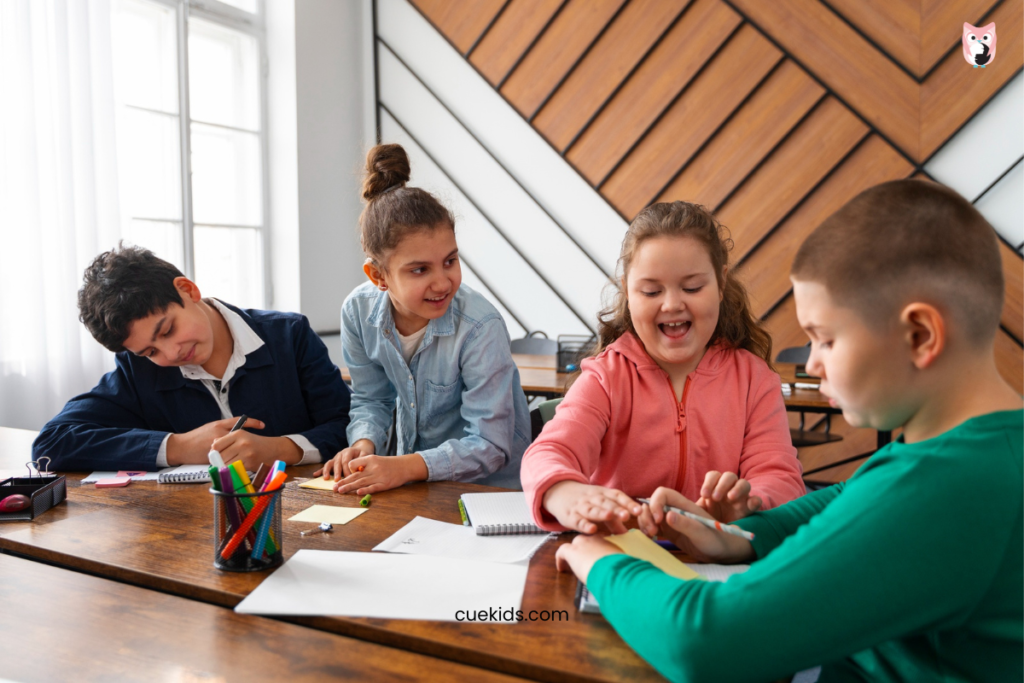As our children’s mentors, it is our responsibility to urge them forward into the world and ensure that they are ready to care for themselves and others around them. These leadership qualities can be brought out by allowing our children to take on group leadership responsibilities and nurturing these qualities, which significantly contribute to their confidence and personality development.
A study by Savenkova et al. (2020) found that children who cultivate leadership attributes, especially in joint, group activities, develop the following skills and knowledge:
- Decision-making
- Cooperation
- Independence and
- Leadership qualities
This, therefore, displays the importance of leading our children into leadership and prepares them to take on larger roles in the future. Developing these skills early on also plays a crucial role in personality development.
Savenkova et al. (2020) further state that these leadership qualities can be learnt by children in their educational environments, and in the case of this study, can start from their preschool years. They go on to mention how one of the key conditions for the development of these attributes is for the child to partake in joint activities with other children and have their teachers stay alongside them to provide them with guidance. Hence, having an authority figure present to help the children who are already in leadership roles how to develop these skills. Captains of groups in schools can always benefit from bettering their leadership attributes, which is what parents and teachers should work towards helping out with.
So the question that stands before us today is: how can we pursue leadership qualities in our child leaders?
Doing so would include helping our child leaders understand when they are doing a good job and when they are making mistakes, helping them when they are faced with challenges, and placing them in situations that will stimulate all of this. This approach not only builds their confidence but also aids in their overall personality development.
Leskinen et al. (2020) writes about how student leadership is boosted when they are given creative tasks to perform and are able to utilise various equipment and other resources. Hence, providing the group leaders with creative tasks, such as asking them to solve a puzzle as a group, will allow them to take more charge of the activity and ensure it is being worked on.
They also discuss how promoting shared leadership, where more than one child leads the group, results in more equal participation among the students in the group and gives rise to more collaboration of knowledge. Being able to perform this in the classroom means that you should supervise the groups and ensure that the children provide each other with leadership opportunities. Teaching the child leaders to share their power rather than harness it all for themselves will teach them to share and strive for equality, thus contributing to their confidence in collaborative settings.
Also Read: Nurturing Leadership Skills in Children – Parenting Guide

Using non-verbal communication
Boosting our children’s leadership qualities largely comes from our communication methods. One way in which we can communicate the dos and don’ts of leadership to our little leaders is via non-verbal communication, which includes body language.
Non-verbal communication is communication through means other than verbal or written words. It relies on facial expressions, gestures, and tone of voice to convey a proper message.
As you walk around the classroom, for example, and supervise group activities, be sure to pay close attention to the group leaders.
If you think that they are doing a good job of leading their group and wish for them to continue in that direction, nudge them on with some non-verbal positive reinforcement. This could look like a smile, a nod, or a thumbs up, all of which are forms of positive body language that can boost a child’s confidence.
Do you think the group leader is veering the group away from the task at hand? Non-verbal communication can also be used to steer them back in the right direction. Simply shifting your gaze to the relevant task can guide the child’s attention away from the distraction and towards where they should be putting their focus.
Stand in with an open and expansive posture to signal to the children that they can approach you if need be. This will make them feel comforted as they lead their groups through the tasks as they know they can reach out for help if they want it.
Know about our Leader in Me course for Children
As you make use of these tactics, remember to allow the children to navigate their leadership themselves as well. This means that you do not necessarily need to intervene immediately, but can allow the children to go through the process of trial and error, allowing them to figure certain things out for themselves. By not stepping in immediately, you give the children space to explore their knowledge, improving their abilities to think on their feet, come up with creative solutions, and use their vast amount of knowledge. This will boost their leadership status as other children, as well as themselves, will notice their work ethic, further enhancing their confidence and personality development.
References
Leskinen, J., Kumpulainen, K., Kajamaa, A., & Rajala, A. (2020). The emergence of leadership in students’ group interaction in a school-based makerspace. European Journal of Psychology of Education, 36(4), 1033–1053. https://doi.org/10.1007/s10212-020-00509-x
Savenkova, T. D., Karpova, S. I., Sukhova, E. I., & Khodakova, N. P. (2020). The Development of Leadership Qualities In 6-7-Year-Old Children in The Process of Joint Activities. SHS Web of Conferences, 79, 04002. https://doi.org/10.1051/shsconf/20207904002






Leave A Comment